In the modern musical world, the elegant, traditional form of the violin seems etched in stone, as if it has always been a standard throughout history. In fact, the violin is a relatively recent invention, though its creation was a long, slow process.
From its early ancestor the rebab in the Middle East, to its emergence into Europe through Spain, and into its strong seat in Italy, the violin’s development is geographically widespread, and led by trade and commerce.
In this article we will explore how the violin evolved into the form it holds today, and furthermore, how the world of violin-making continues to develop and thrive in the modern world.
Early Ancestors and Origins
The first known bowed, stringed instrument was the Ravanastron, emerging in Medieval India, patronized by Kings and nobility.
Between the seventh and tenth centuries, the ravanastron was brought to the Middle East by traders, and from there, bowed, stringed instruments spread and were developed throughout Asia, Africa, and eventually Europe.
The Rebab
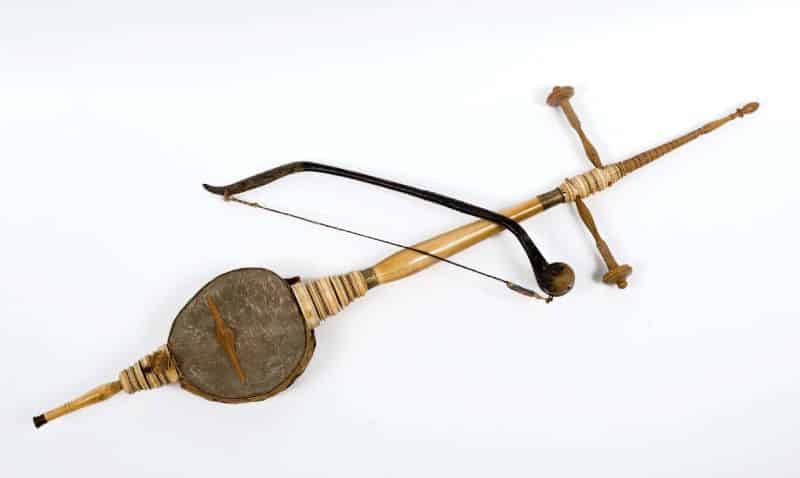
The first recognizable ancestor of modern violins is the Rebab which originated in the 8th Century in the Middle East, spreading throughout North Africa and Europe along trade routes.
The Rebab varied in its construction and materials, but was generally divided into three categories:
- long, slender instruments with an end-pin
- short, wide instruments with a large resonating chamber
- rounded, pear-shaped instruments
The instrument features 3-4 strings, a pegbox with pegs for each string, and a bow held similarly to a German double bass bow-hold (held from the side rather than from the top).
In Europe, the rebab developed into two instruments: the Rebec and the Lyra.
The Rebec
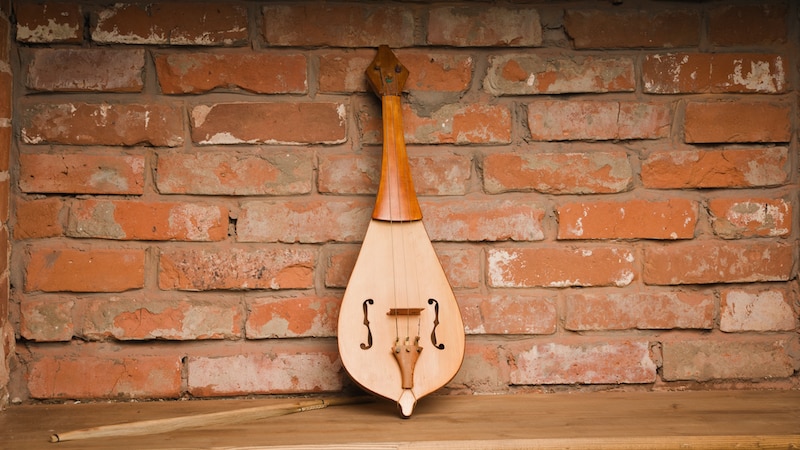
This offshoot of the Rebab was likely introduced to Europe during the Arabic conquest of the Iberian Peninsula.
The Rebec has between 1 and 5 strings, and are typically tuned in fifths, much like modern types of violin today.
Similarly to the violin, it is held against the shoulder with the left hand, the right hand controlling the bow.
Unlike later instruments, such as Vielles, Gambas, or modern violins, which are made with multiple pieces of wood, the Rebec was carved from a single piece of wood.
The Lyra
Emerging out of Byzantine Empire in the 10th-12th Centuries, the Lyra is a pear-shaped instrument, held upright like a cello, and played with a long, curved bow.
Some variants are still played today, primarily in communities in the former Byzantine Empire, including, but not limited to, Greece, Turkey, Bulgaria, and Serbia.
The Italian Lyra variant Lira da Braccio is particularly similar to the violin, and is often considered to be the most direct ancestor to the modern violin.
The Vielle
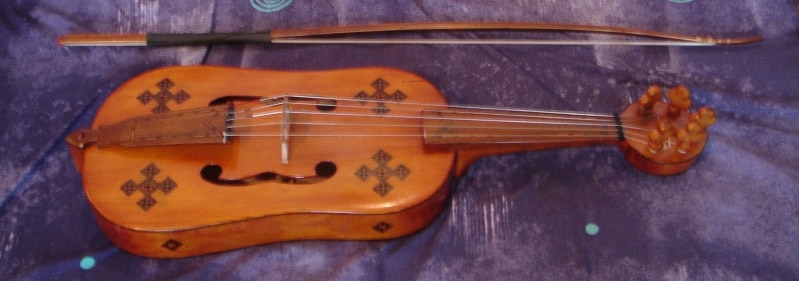
These oval-shaped instruments had three to five strings, turning pegs, and similarly to violins, these instruments had a separate back and face, connected by ribs going along the edges.
Viola da Gamba
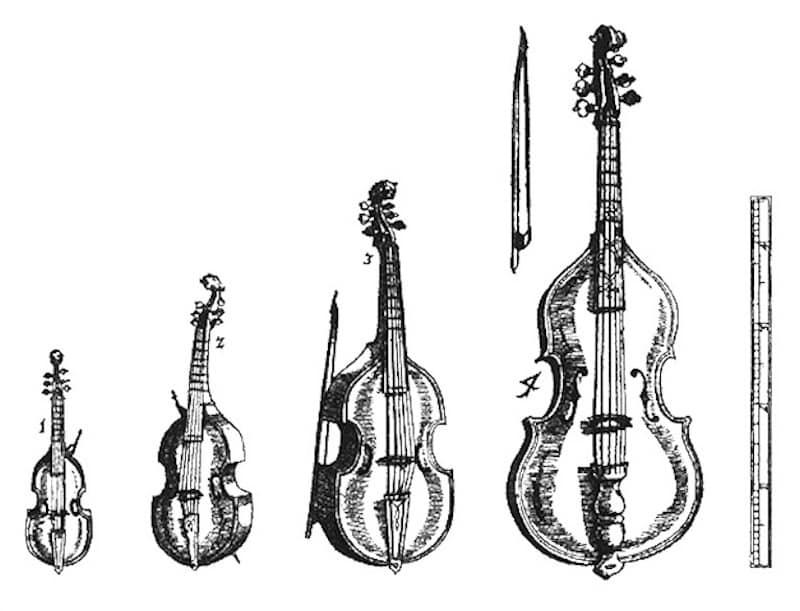
Probably the best known of the antiquated bowed instruments, the Viola da Gamba is instrument of the baroque period that is often still played in Baroque ensembles, and was the inspiration for many pieces now performed by other instruments.
Commonly referred to as viols or gambas, instruments from this family feature frets and double-bass-like shapes.
They emerged in the 15th Century, and were popular until the end of the Baroque era, before being overtaken by the violin family.
The Debut of the Modern, Italian Violin
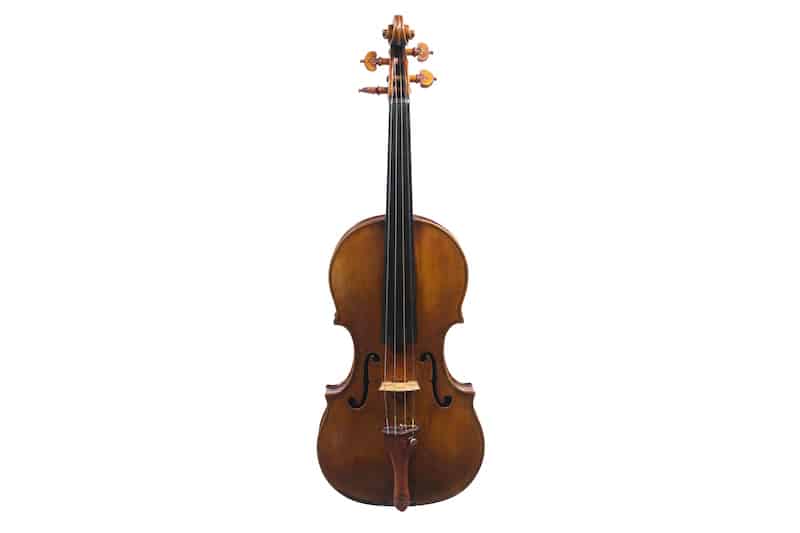
The oldest, surviving violin is an instrument by the Cremonese violin-maker, Andrea Amati.
Cremona already had a reputation for stringed instrument-making, and, under Amati’s influence, the city remained the center of violin-making excellence for generations.
Amati was the patriarch of the Amati family, in addition to being the herald of a new form of instrument-making.
His sons, and most importantly his grandson, Nicolo Amati, were all also fine violin-makers, whose works still stand as masterpieces in the violin world.
Nicolo Amati’s workshop was also the beginning of another violin-making dynasty, the Guarneri Family, as Andrea Guarneri was one of Nicolo’s apprentices.
Today, the Guarneri Family’s most prestigious instruments are those made by the grandson, Bartolommeo Giuseppi “del Gesu” Guarneri.
In addition to the Guarneri Family, one of the most well-known figures in the history of the violin, Antonio Stradivari, is also thought to have apprenticed with Nicolo Amati during his early career.
The other legendary maker of the era was Giovanni Batista Guadagnini, an Italian Luthier born near Cremona, who worked in various cities across Italy.
Violins made by the Amati Family, Guarneri Family, Stradivari, and Guadagnini are still used today, in addition to legacy instruments by other prominent makers.
These instruments are typically sold by auction, or between collectors, and have incredibly high prices.
The most expensive violin sale to date was the Viexutemps Guarneri, sold for £10.5 million at auction in 2016.
Twentieth-Century Shift to Industrial Manufacturing
From the 1870’s into the 1920’s, as the global economy shifted from local manufacturing to large-scale factory systems, many violin-makers realized that instruments could be made in huge batches and sold to a wider audience.
Most workshops had a single master-maker, with a variety of apprentices and entry-level luthiers making a full suite of lesser instruments to sell at large.
One prominent example is Janek “John” Juzek, a Czechoslovakian violin-maker and merchant who sold violins across the world from the 1920’s through the 1970’s.
Many student violinists can look inside their instruments and find his name.
Some of these violinists will also look up the maker’s name on the internet and find that his instruments can be worth thousands of dollars!
Unfortunately, while he did make a masterpiece series of instruments of his own, the vast majority of violins with the name John Juzek were made in his workshop by other luthiers, some even after his death in 1965.
Small Instruments for Students
Another adaptation to the violin brought on by large-scale manufacturing was the development of smaller-sized instruments.
Violins have always had a slightly variable sizing, many of the early Italian violins are slightly more slender than those today, and it’s not uncommon to find a nice 7/8ths size for a violinist looking for more ease getting around the instrument.
In the 20th Century, however, small violins for small players became a necessity, as developments in music education made the violin a universal standard.
Shinichi Suzuki, the creator of the Suzuki Method, grew up involved in his father’s violin factory in Nagoya, Japan.
Suzuki realized that teaching children at young ages, particularly during language-acquisition stages, allowed them to have a deeper, innate understanding of music.
This method required a reliable source of small instruments for these tiny violinists.
Suzuki’s father’s factory manufactured a vast number of small instruments, in fact, many students today use violins made in the Suzuki Factory, and can find “Suzuki Violin Co., Ltd.” on their instrument’s label.
While manufacturing of all sizes of instruments increased as a result of the Suzuki Method, 32nd and 64th size instruments were notably invented solely for use with the method.
Modern Artisan Makers
The world of fine violin-making is still thriving, and all across the world there are master luthiers crafting instruments.
Many of them study in Cremona to jump-start their career, as the city is still the center of the violin world.
The modern luthier community has many trade journals, including Strad magazine, and many competitions where luthiers can show their impressive artistic touch.
Development of Electric Violins
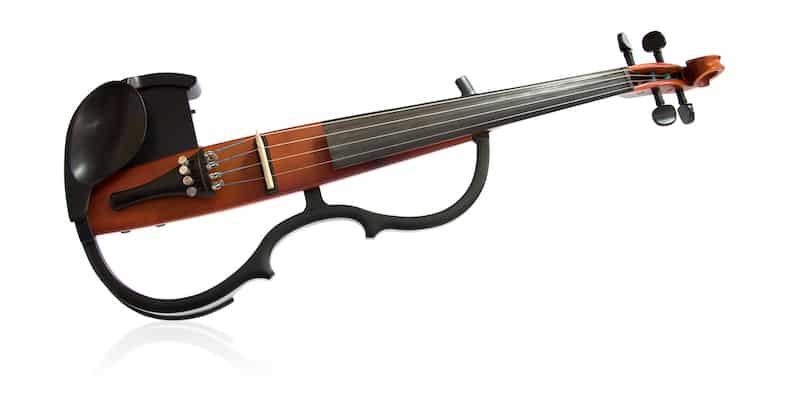
With the advent of electric amplification in the early twentieth-century, instrument inventors and electrical engineers began looking at ways to convert instruments to electric forms.
George Beauchamp, the inventor who patented the first electric guitar in 1931, began to sell electric violins in 1936 as part of his Electro String Instrument Corporation.
The first electric violins to hit the market were hollow-bodied, resembling the shape of a standard acoustic violin, though, at the time, few violinists adopted the electric trend.
In 1958, Fender presented their first electric violin, a solid bodied instrument, beginning the mass-distribution of electric violins to a large portion of jazz, rock, and fusion performers.
Today, there are a myriad of electric violin shapes, from a variety of makers.
Although Beauchamp’s company has long since dissolved, Fender and other manufacturers continue to produce plenty of buzz for the electric violin.
Summing Up The Violin’s History
As a violinist, it is important to be aware of the violin’s predecessors, and how the modern violin was able to carve its way into a thriving musical community already saturated with instruments.
This lasting design has made its mark through efficient sound production, elegance of design, and playability.
When picking out a violin, even a modern instrument, consider the centuries of progress that brought it into being, and the skilled craftsman, or team of craftsmen, who pieced it together for your use.

